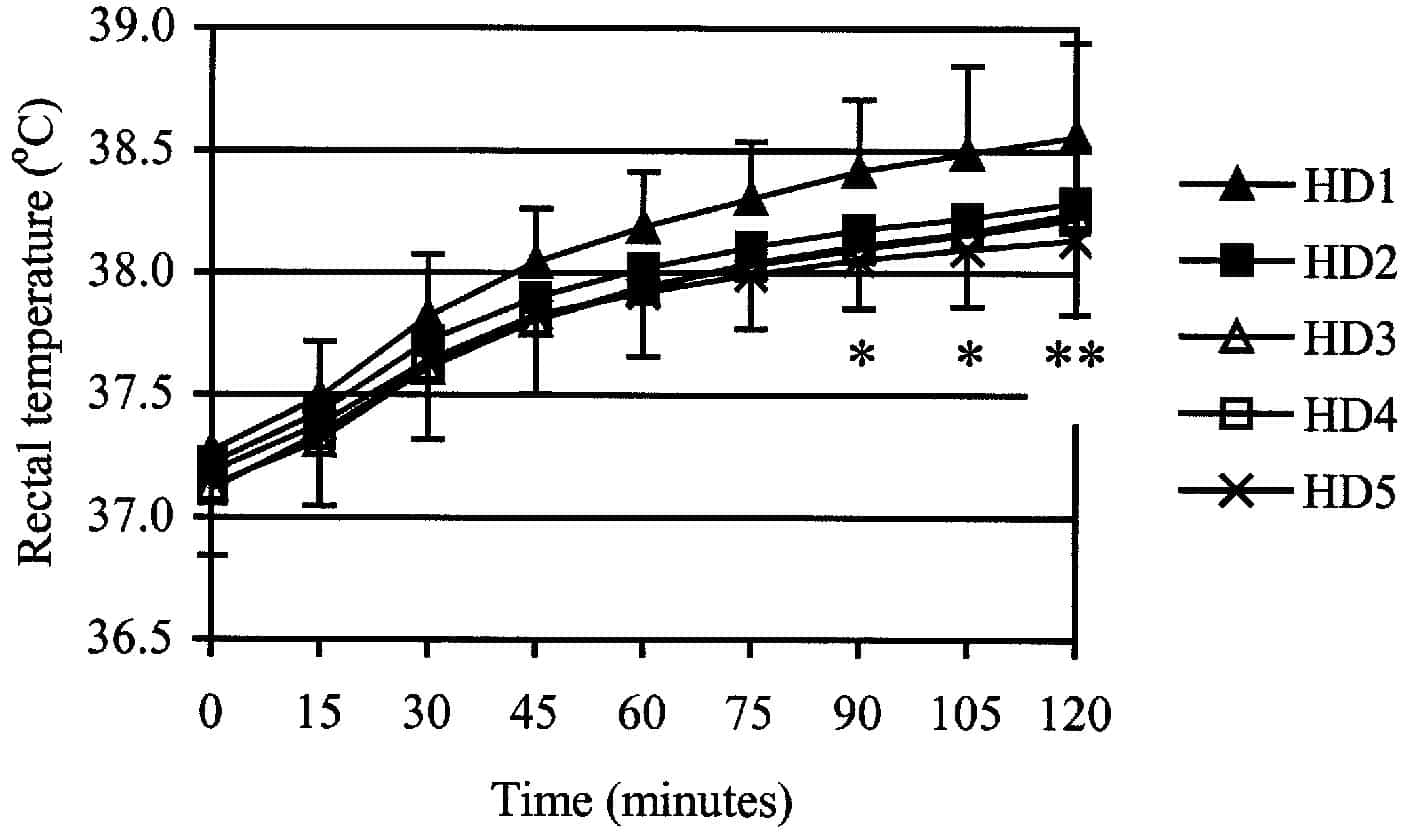Little is known about how much of the inter-individual variability in heat strain responses to exercise-heat stress is due to intra-individual variability, although preliminary research suggests that it may be relatively high (Livingstone et al. 1992). As an understanding of all sources of variability is important for setting occupational heat stress limits, the aim of the present study was to quantify the intra-individual variability in heat strain to a standardised work-in-heat test.
Following local ethics committee approval, 7 men (mean (1 S.D.): age, 26.1 (4.9) years; body mass, 77.7 (12.0) kg; peak oxygen uptake, 51.8 (7.9) ml min-1 kg-1) undertook 120 min of treadmill walking (speed, 1.53 m s-1; grade, 5 %) in a hot-dry environment on five occasions (HD1-5). Dry-bulb temperature, globe temperature, relative humidity, and air speed were 35.33 (0.1) °C, 35.73 (0.1) °C, 19.93 (0.1) %, and 1.13 (0.1) m s-1 respectively. Subjects wore lightweight clothing and drank water ad libitum. The tests were undertaken at a rate of one per week to minimise the effects of partial heat adaptation (Barnett & Maughan 1993). Rectal temperature (Tre), mean skin temperature (Tsk) and heart rate (HR) were measured every min. Sweat loss (msl) was calculated from changes in nude body mass. Metabolic rate (M) was measured (Douglas bags) at 10 and 110 min. Data were analysed by a two-factor (Week and Time) ANOVA.
There was a Week-Time interaction in Tre (P < 0.05) (Fig. 1), although there were no significant effects in the other variables. The mean heat strain variables (across Weeks) at 120 min were: Tre, 38.3 (0.4) °C; Tsk, 36.0 (0.8) °C; HR, 146 (22) b min-1; and msl, 1.0 (0.2) kg h-1. Mean M was 295 (26) W m-2 at 110 min.
The mean intra-individual S.D. / coefficient of variation (across HD1-5) were: Tre, 0.2 °C / 0.5% Tsk, 0.3 °C / 0.8% HR, 5.9 b min-1 / 4.3% and msl, 0.1 kg h-1 / 6.3% and M, 7.5 W m-2 / 2.6 %. The intra-individual variability in heat strain is relatively large and likely to account for a significant proportion of the total variability during exercise-heat stress. If this variability in Tre is greater than the differences between heat stress limits for different values of M (typically 2-3°C) then the limits may be impracticable. This study has also established that separating work-in-heat tests by 7 days may be insufficient to negate the effects of heat adaptation.
This work was funded by the Chemical, Biological and Human Science Domain of the UK Ministry of Defence Corporate Research Programme.

